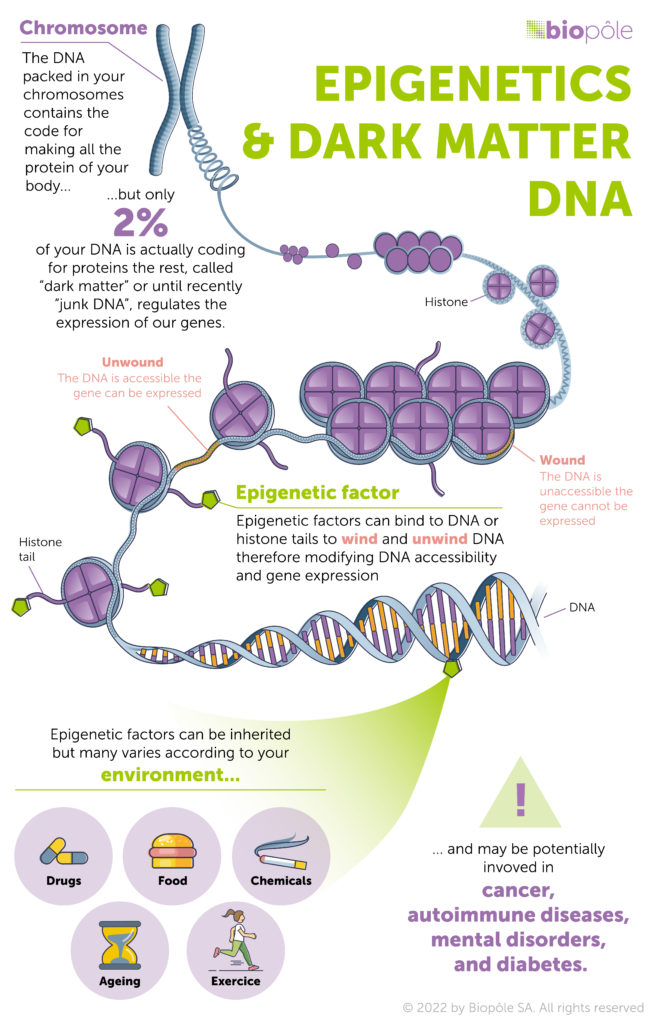The discovery of ‘dark matter’ has opened up a whole world of possibilities for therapeutics and even changed the way we look at biology. Samir Ounzain explains some of the opportunities and challenges that lie ahead.
When we sequenced the human genome in 2001, we discovered that 98% of our DNA is ‘dark matter’. Unlike the proteins that make up your body or cells, dark matter doesn’t encode protein-coding genes and therefore has no obvious function. Because of this, it was dismissed as ‘junk DNA’.
Over the last couple of decades, however, we’ve come to understand that these non-coding sequences of our DNA are anything but junk. In fact, we can think of this dark matter as the software that tells our genes how to behave in response to our environment and behaviour. It’s the interface between the outside world and what happens in our cells. This is extremely significant – in fact, it’s a huge part of what distinguishes human beings from simple organisms. It’s this dark matter that allows for complex patterns of gene expression, making the highly developed cellular and organismal traits of human beings possible.
Once the human genome had been sequenced, biology went digital. With the ‘book of life’ at our disposal, we could start to compare the genetic code of millions of individuals and look at genetic variations, or mutations, that lead to common diseases and traits. We found that almost all these mutations happen in dark matter. Once we’d realised that dark matter responds to lifestyle and environmental factors, the link between dark matter and diseases also became clear. The logical implication of this is that drugs and therapeutics can be developed to act on non-coding DNA to control changes in the cell behaviour that causes common and chronic conditions. RNAs, which are issued from DNA, are in charge of regulating processes within our cells. Therefore, targeting or leveraging non-coding RNA could be crucial to develop new solutions to prevent or cure diseases.

